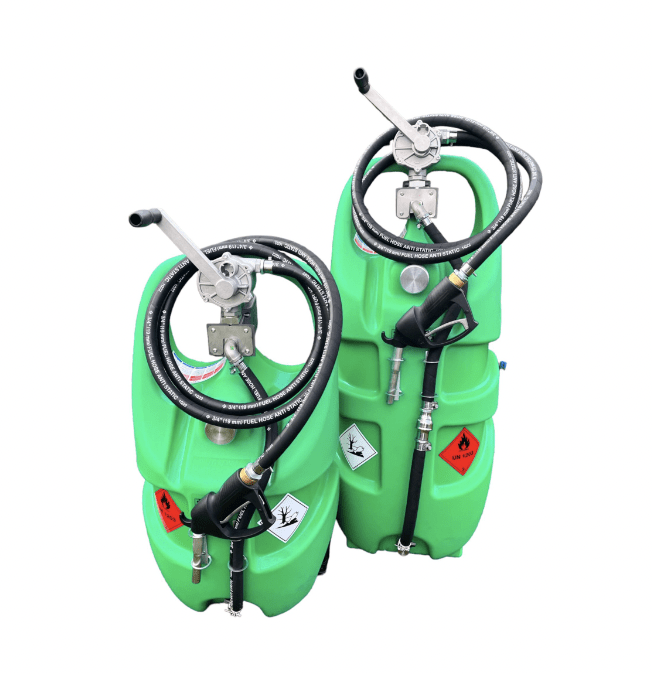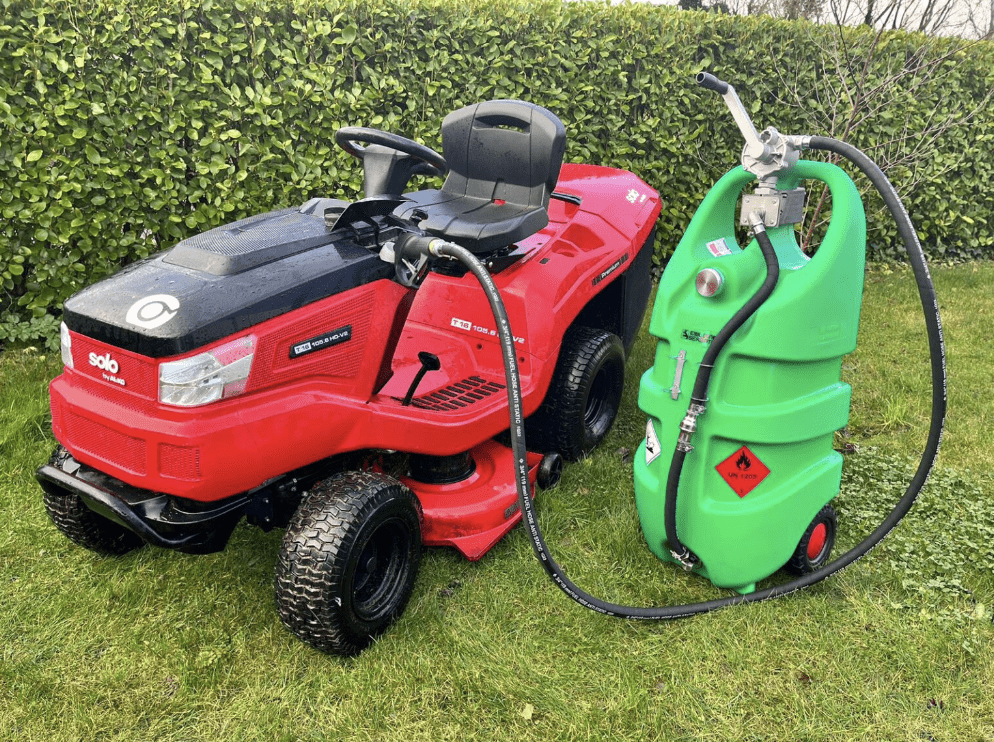Petrol is a highly flammable liquid and can cause injury, fire, explosion, or environmental damage. So to avoid this, it’s vital that petrol is stored safely, whether you’re storing it in a jerry can or a petrol tank.
To help you out, we’ve outlined below how to store petrol in Ireland, based on guidelines from the Health and Safety Authority. We also let you know the procedures you must follow when filling petrol containers, and which containers you should use.
Avoid Fire Hazards
When storing petrol, you need to be aware of the fire hazards associated with it. Petrol is flammable and has a very low flash point, so in temperatures above 40°C it creates a vapour.
This vapour can be ignited by a spark, flame, or heat source. To avoid fires or explosions, please do the following:
- Avoid handling petrol in or near low lying areas like sumps, drainage systems, and inspection pits.
- Avoid handling petrol near ignition sources such as smoking, naked light, hot engines, heaters, etc.
- Take note of local conditions such as sloping ground and wind as vapour can be carried by the wind and travel down slopes. Vapour can affect an area of at least 4.5m in all directions around the source.
Portable Storage Containers
If you’re storing or transporting a small amount of petrol, use leak-proof containers made from metal or other material that’s strong enough. Many people use jerry cans made from plastics or metal.
Look out for a ‘UN’ mark on the container, which lets you know it’s United Nations approved. The container must also be marked and labelled with a flammable liquid hazard warning label and the words “PETROLEUM-SPIRIT Highly Flammable Capacity___Litres”.
How To Fill A Container With Petrol
When filling a container with petrol, avoid all sources of ignition, e.g. hot engines/exhaust, naked light, heaters, smoking, mobile phones, etc. People under 15 years of age may not dispense or handle petrol.
When you’re filling a container from a dispensing pump at a private or retail store, there a few guidelines you need to follow:
- Use a container that has less than 25 litres capacity and place it on the ground when filling, and avoid overfilling the container. Don’t use a funnel as this can cause overfilling and spillage.
- Insert the pump nozzle into the container and maintain contact between the nozzle and the container.
- Fill the container slowly.
- Always leave at least 5% space for thermal expansion when filling the container. The maximum filling capacity for any petrol container is 95%.
- If you transported a container in a vehicle, the container needs to be removed from the vehicle and placed on the ground before you fill it. This reduces the possibility of a static discharge, which can ignite petrol vapour.
- Petrol vapour can be ignited by static sparks, so you must ensure a proper electrical earth is established to reduce static build up.
If you’re dispensing petrol from a container with a capacity greater than 45 litres, you must use a suitable barrel pump or another suitable device that has a vapour tight seal. This will usually happen at a private store.
How To Store Petrol In Large Quantities
If you’re storing over 20 litres of petrol in total or storing petrol in containers over 10 litres rated capacity, the storage place must:
- Be able to contain any spills or leaks so they don’t spread.
- Be sign posted with a ‘no smoking’ sign and flammable liquid hazard warning.
- Be lockable to prevent unauthorised access.
- Have a suitable fire extinguisher(s), either foam or dry powder type.
- Have adequate ventilation.
- Be separated from any building that is occupied.
- Be given at least 6m clearance from any combustible material, other flammable substances, or any other building.
If you’re storing over 100 litres of petrol in total, or storing petrol in containers over 23 litres rated capacity, you must let your local licensing authority know and you must do this every year thereafter. Your local licensing authority may be a Fire Authority or Harbour Authority.
For further guidelines on how to store and transport petrol, please visit www.hsa.ie.
So that’s how you can safely store petrol, based on Irish guidelines. If you need a petrol tank, have a look at ours that come in 55L and 110L sizes. They’re caddies with puncture-proof wheels for easy portability.



